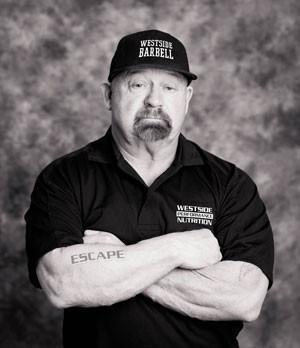TRAINING MISTAKES PART 1

Westside Barbell receives lots of calls and emails seeking lifting advice: from technique, to periodization, to how to use lifting gear. We always respond with an answer based on a strong foundation of knowledge and experience. But is it always the right answer? We like to think so, but reality is that, just as we have done many things the right way, we have also done many things the wrong way at Westside. But once we find what we believe was the right way to do something and it turns out to actually be the wrong way, we refuse to repeat it. If doing something is not advantageous, then it is disadvantageous. In this article I will present to you some of the most common mistakes being made by lifters that we have corrected.
BENCHING
Always push the bar in a straight line up from where it makes contact with your lower chest–not from your chest in an arc back over your face. If you’re pushing the bar back over your face, you end up rotating the elbows outward, which cause a rotator injury and pec tears. When taking the bar out of the rack, take it out over the stomach and lower it in a straight line, then concentrically press straight upward. The elbows will remain under the bar at all times–no rotating, no injuries. This requires strong triceps and lats, along with strong rear and side delts. The triceps must be the strongest muscle group involved in this lift. This ensures that the triceps start the lift, and not the pecs that are highly susceptible to injury. The delts are also easy to injure, as well, but we see very few tricep injuries. It’s better to use your thumb around the bar than a thumb-less grip because the harder you squeeze the bar, more muscles get activated.
Do not overarch the lower back; the upper back supports the weight of the bar.
Do not lower the bar too slowly–faster is better, as long as you maintain control.
This way, you’ll have more reversal strength (40% of your eccentric muscle potential is optimal).
If you tuck your feet up close to your hips, you will lose leg drive. If your butt comes off the bench, flare your feet out in front of the bench and push with your heels.
If you are weak off the chest, build your upper back and lats; the lats control the path of the bar. If you lack strength at lock out, build your triceps, work on bar speed, both eccentrically and concentrically, and always use bands or chains for explosive and speed strength work. Use 25% to 30% at lockout with good tension also at the chest.
BENCH SHIRT WORK
The biggest mistake we see is jacking up the shirt to break a board record. No one cares what you board press–only what you can touch to your chest and lockout.
The strongest raw lifter will not always be the strongest bench shirted lifter; some lifters can’t take the extreme pressure of a good shirt.
If you have not learned to pull a bar out of the rack, do not take a hand out raw until you learn to pull the bar over the right spot with your lats. A lifter who pushes the bar backward into the bench supports or causes the plates shake is not using his lats.
MEET DAY
Do not open with a weight that will not touch your chest due to the restrictions of the shirt.
Not having a wide grip may take your triceps out of the lockout.
Bench shirt selection is an individual choice. Westside Barbell uses Inzer gear.
DEADLIFTING
A common mistake is pulling the bar straight up. It must be pulled into the body, toward the body’s center of mass. To help with this, chair deadlifting and bands from the front both pull the bar forward so you must concentrate on pulling the bar toward you as hard as possible.
Don’t start with your legs too low, this places the hip joint far away from the bar, when biomechanically your hips must be close to the bar as possible from the start of the lift through the finish.
If you feel the majority of the deadlift in any one muscle group, your form is incorrect. The work should be distributed equally between the legs, hips, and back.
Don’t use a suit that will not let you get into a proper squatting position.
Always open light. It’s not what you open with… it’s what you finish with.
SPECIAL EXERCISES FOR BENCHING AND DEADLIFTING
After the bench or deadlift, pick three to four special exercises for both lifts. For benching, the lifter should do two sets of dumbbell presses in one of four angles, with moderate weight. For example, you could perform dumbbell presses for 50 pounds for easy sets of 15 reps, then tricep extensions, followed by upper back and lats, and finally rear and side delts. For deadlifting, do reverse hypers, inverse curls, rows, and abs. Remember that 80% of your training should consist of special exercises, and only 20% with the classic lifts. For recovery, 72 hours should separate speed and max effort workouts. Small workouts can be done on off days or later in the day.
There are still many more mistakes and how to correct that we haven’t yet covered, so look forward to Training Mistakes – Part Two,




